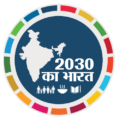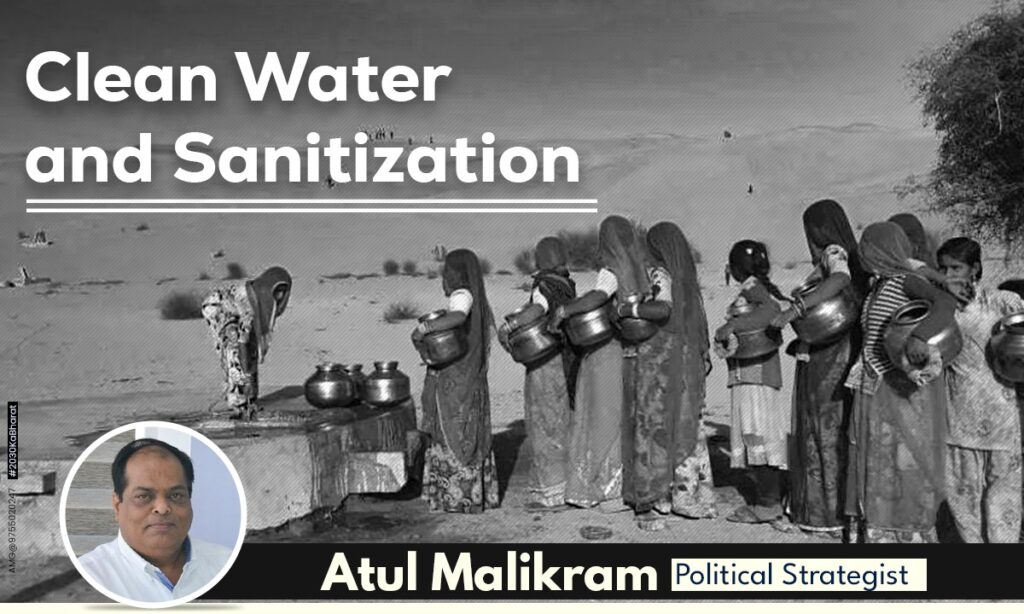Clean water and Sanitization are fundamental human rights that directly impact the health and well-being of individuals and communities. Access to clean water is crucial for drinking, hygiene, and agriculture, while sanitation facilities are essential for preventing the spread of waterborne diseases. To address these pressing challenges, the United Nations has established the Sustainable Development Goals (SDGs), a set of global targets to achieve a better and more sustainable future for all. In this article, we delve into the significance of clean water and Sanitization, focus specifically on SDG 6, and explore India’s journey towards achieving these SDG goals by 2030.
1. Importance of Clean Water and Sanitation
Clean water and Sanitization play a pivotal role in promoting good health and well-being among individuals and communities. When people have access to clean water, they can stay hydrated, maintain hygiene, and prevent waterborne diseases. Additionally, proper sanitation facilities, such as toilets and wastewater management systems, are vital for preventing the contamination of water sources, thus reducing the risk of diseases like cholera, diarrhea, and hepatitis.
2. The Sustainable Development Goals (SDGs)
The Sustainable Development Goals (SDGs) are a comprehensive set of targets adopted by the United Nations in 2015 to tackle global issues and create a more sustainable world by 2030. The SDGs encompass 17 interconnected goals, addressing various dimensions of sustainable development, including poverty eradication, health, education, gender equality, climate action, and more.
3. SDG 6: Clean Water and Sanitation
SDG 6 focuses specifically on ensuring availability and sustainable management of clean water and Sanitization for all. This goal aims to guarantee universal access to safe and affordable drinking water, improve water quality, enhance water-use efficiency, and provide adequate sanitation facilities to individuals worldwide.
4. Clean Water and Sanitation in India
In India, clean water and Sanitization have long been significant challenges due to a rapidly growing population, inadequate infrastructure, and limited access to resources. Millions of people in both urban and rural areas face difficulties in accessing clean water for drinking and hygiene, while proper sanitation facilities remain lacking in many regions.
The Indian government has recognized these challenges and embarked on various initiatives and programs to address the issues of clean water and Sanitization. The Swachh Bharat Abhiyan (Clean India Mission), launched in 2014, aims to achieve universal sanitation coverage by constructing toilets, promoting behavior change, and addressing open defecation practices. The Jal Jeevan Mission focuses on providing piped water supply to every household by 2024, ensuring access to clean drinking water.

5. Key Focus Areas for Achieving SDG 6 in India
To achieve SDG 6 in India, concerted efforts must be made in several key focus areas:
a) Improving Access to Clean Water
Improving access to clean water is a crucial step towards achieving SDG 6. This involves investing in water infrastructure, such as building water treatment plants, installing water supply systems, and promoting rainwater harvesting techniques. Additionally, ensuring proper water management and distribution can reduce wastage and increase efficiency.
b) Promoting Proper Sanitation Practices
Promoting proper sanitation practices is essential for preventing the contamination of water sources and improving public health. This includes constructing toilets in households, schools, and public spaces, as well as implementing effective waste management systems to treat and dispose of wastewater safely.
c) Enhancing Water Resource Management
Efficient water resource management is critical for sustainable development. Encouraging practices like water conservation, watershed management, and groundwater recharge can help maintain water availability and quality in the long run. Adopting more sustainable irrigation techniques and promoting efficient agricultural practices can also reduce water usage in the farming sector.
d) Encouraging Behavioral Change
Changing behaviors and cultural practices related to water and sanitation is essential for long-term sustainability. Educating communities about the importance of clean water and proper Sanitization, as well as promoting handwashing habits, can significantly impact health outcomes and prevent the spread of diseases.
6. Community Involvement and Partnerships
Achieving SDG 6 requires collective action and partnerships involving governments, civil society organizations, local communities, and the private sector. Engaging communities in planning, decision-making, and implementation fosters a sense of ownership and ensures the sustainability of initiatives. Building collaborations with NGOs, international organizations, and corporate entities can bring expertise, resources, and innovative solutions to address complex water and sanitation challenges.
7. Innovations and Technologies for Clean Water and Sanitation
Innovation and technology play a vital role in advancing water and sanitation solutions. Rapid progress has been made in the development of water purification technologies, such as filtration systems, disinfection methods, and desalination techniques. Additionally, smart water management systems, remote sensing technologies, and data analytics offer opportunities for efficient monitoring, resource optimization, and early warning systems.
8. Success Stories and Best Practices
Numerous success stories and best practices demonstrate the progress made towards achieving SDG 6 in India. Various states and cities have improved their water and sanitation infrastructure, implemented behavior change campaigns, and achieved significant milestones in sanitation coverage. These success stories serve as inspiration and can guide other regions in replicating effective strategies for achieving their clean water and Sanitization goals.
9. Ensuring Sustainability and Long-term Impact
To ensure sustainability and long-term impact, certain measures must be adopted:
a) Monitoring and Evaluation
Establishing robust monitoring and evaluation mechanisms is crucial to track progress, identify gaps, and make data-driven decisions. Regular assessments of water quality, coverage, and sanitation practices enable policymakers to adjust strategies and allocate resources effectively.
b) Capacity Building and Education
Investing in capacity building and education is essential to empower communities, government officials, and professionals dealing with water and sanitation. Enhancing expertise, technical skills, and awareness can drive innovation, strengthen implementation, and improve the overall management of water resources.
Clean water and Sanitization are foundational elements for human health, well-being, and sustainable development. Achieving SDG 6 in India requires concerted efforts in improving access to clean water, promoting proper sanitation practices, enhancing water resource management, and encouraging behavioral change. It is crucial to foster community involvement, forge partnerships, embrace technological innovations, and learn from successful initiatives across the nation. By prioritizing these goals and working collaboratively, India can pave the way for a better and more sustainable future.
Frequently Asked Questions (FAQs)
1. Why is clean water important for our health?
Clean water is vital for staying hydrated, maintaining proper hygiene, and preventing waterborne diseases.
2. What is the role of the Sustainable Development Goals (SDGs) in addressing water and sanitation challenges?
The SDGs provide a framework for governments, organizations, and communities to tackle water and sanitation issues, promoting global collaboration and sustainable solutions.
3. What initiatives has the Indian government undertaken to improve clean water and Sanitization?
The Indian government has launched initiatives like Swachh Bharat Abhiyan and Jal Jeevan Mission to improve sanitation coverage and provide clean drinking water.
4. How can behavioral change contribute to achieving SDG 6?
Promoting behaviors like handwashing, proper toilet usage, and water conservation can significantly impact water and sanitation outcomes and prevent diseases.
5. What role do partnerships play in achieving SDG 6?
Partnerships and collaborations involve different stakeholders, bringing together expertise, resources, and innovative solutions to address water and sanitation challenges effectively.

